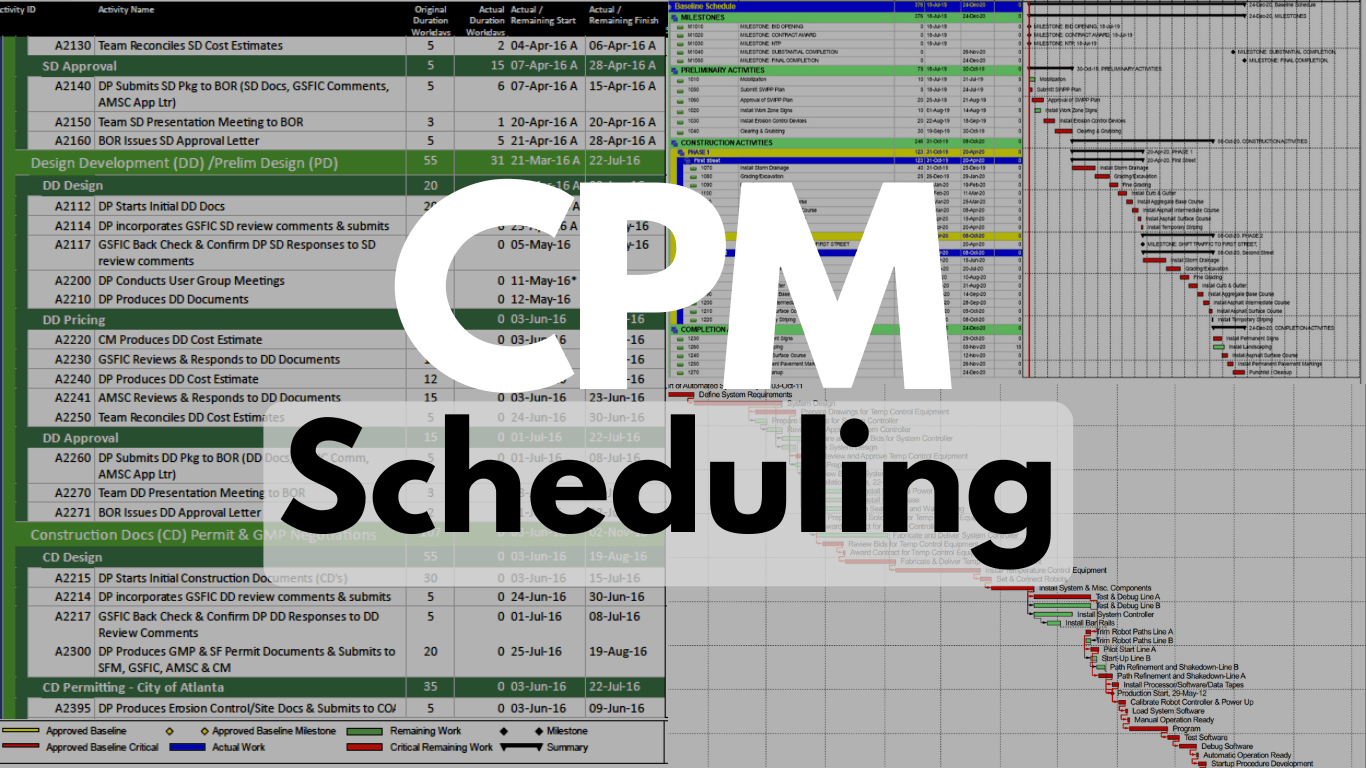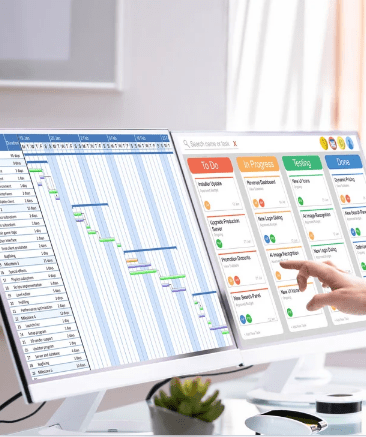
CPM Scheduling: Ensuring Successful Project Management.
In the construction industry, effective project management is the cornerstone of successful project completion. One of the most reliable tools in project management is CPM Scheduling (Critical Path Method Scheduling). At Real Estimate Service, we pride ourselves on offering top-notch CPM Scheduling services, helping clients streamline their projects and achieve timely completion.
What is CPM Scheduling?
This is a project management technique that involves identifying the critical path of a project. The critical path is the longest sequence of activities that must be completed on time for the entire project to be completed by the due date. By focusing on these critical tasks, project managers can effectively allocate resources, manage deadlines, and avoid potential delays.
Importance of CPM Scheduling
It is crucial for several reasons:
Efficient Resource Allocation: By identifying the critical tasks, resources can be allocated efficiently, ensuring that no time or material is wasted.
Time Management: It helps in tracking the progress of each task and the overall project, ensuring that deadlines are met.
Risk Mitigation: By highlighting the critical path, potential risks and delays can be identified and mitigated early.
Cost Control: Effective scheduling ensures that the project stays within budget by avoiding costly delays and inefficiencies.

The CPM Scheduling Process
At Real Estimate Service, our Scheduling process is comprehensive and precise:
Step 1: Project Breakdown We start by breaking down the entire project into smaller, manageable tasks. Each task is identified and documented, detailing its duration and dependencies.
Step 2: Network Diagram Creation Next, we create a network diagram that visually represents the sequence of tasks. This diagram helps in identifying the relationships between different tasks and their dependencies.
Step 3: Critical Path Identification Using the network diagram, we identify the critical path by calculating the earliest and latest start and finish times for each task. The critical path is the sequence of tasks that dictates the project’s overall duration.
Step 4: Schedule Development We develop a detailed project schedule, highlighting the critical tasks and their timelines. This schedule serves as a roadmap for project execution.
Step 5: Monitoring and Control Throughout the project, we monitor the progress of each task, ensuring that the project stays on track. Any deviations from the schedule are addressed promptly to avoid delays.
Tools and Techniques
We utilize industry-leading software and techniques to enhance the accuracy of our Scheduling:
Microsoft Project: A powerful project management tool that helps in creating detailed schedules and tracking progress.
Primavera P6: An advanced project planning and scheduling tool widely used in the construction industry for managing large-scale projects.

Benefits of Using CPM Scheduling Services
Enhanced Efficiency: CPM Scheduling improves the efficiency of project execution by focusing on critical tasks and optimizing resource allocation.
Accurate Timelines: It ensures accurate project timelines, helping in meeting deadlines and avoiding delays.
Increased Accountability: By clearly defining each task and its timeline, CPM Scheduling increases accountability among team members.
Improved Risk Management: Early identification of potential risks allows for proactive measures to mitigate them.
Showcase of CPM Scheduling Services
Our portfolio includes a wide range of projects where CPM Scheduling has made a significant impact:
Commercial Construction: Ensuring timely completion of office buildings, retail spaces, and other commercial facilities.
Residential Projects: Streamlining the construction of single-family homes, townhouses, and large residential complexes.
Industrial Projects: Managing the construction of manufacturing plants, warehouses, and logistics centers with precision.
Real Estimate Service is dedicated to providing precise, fast, and reliable Industrial Estimating Services. With our certified team and advanced software, we ensure you receive the best estimates in the shortest time possible. Contact us today to experience our exceptional services.
For more information, check out our page or get in touch with us through our .
Frequently Asked Questions (FAQs)
What is CPM Scheduling?
CPM Scheduling is a project management technique that involves identifying the critical path of a project to ensure timely completion.
Why is CPM Scheduling important?
It helps in efficient resource allocation, time management, risk mitigation, and cost control, ensuring successful project completion.
What tools do you use for CPM Scheduling?
We use advanced tools like Microsoft Project and Primavera P6 for accurate scheduling and progress tracking.
How quickly can you develop a CPM schedule?
At Real Estimate Service, we pride ourselves on delivering detailed CPM schedules within a short turnaround time, tailored to meet your project needs.
What types of projects can benefit from CPM Scheduling?
CPM Scheduling is beneficial for a wide range of projects, including commercial, residential, and industrial construction.
How do you ensure the accuracy of your CPM schedules?
Our certified project managers use advanced software and undergo rigorous quality checks to ensure the accuracy of every schedule.

